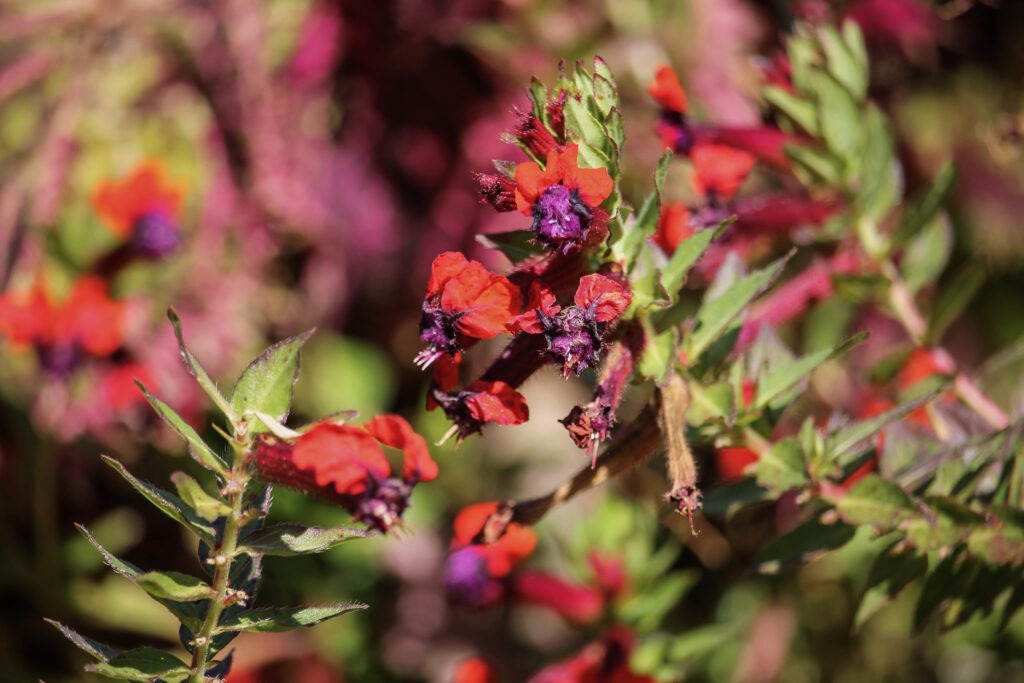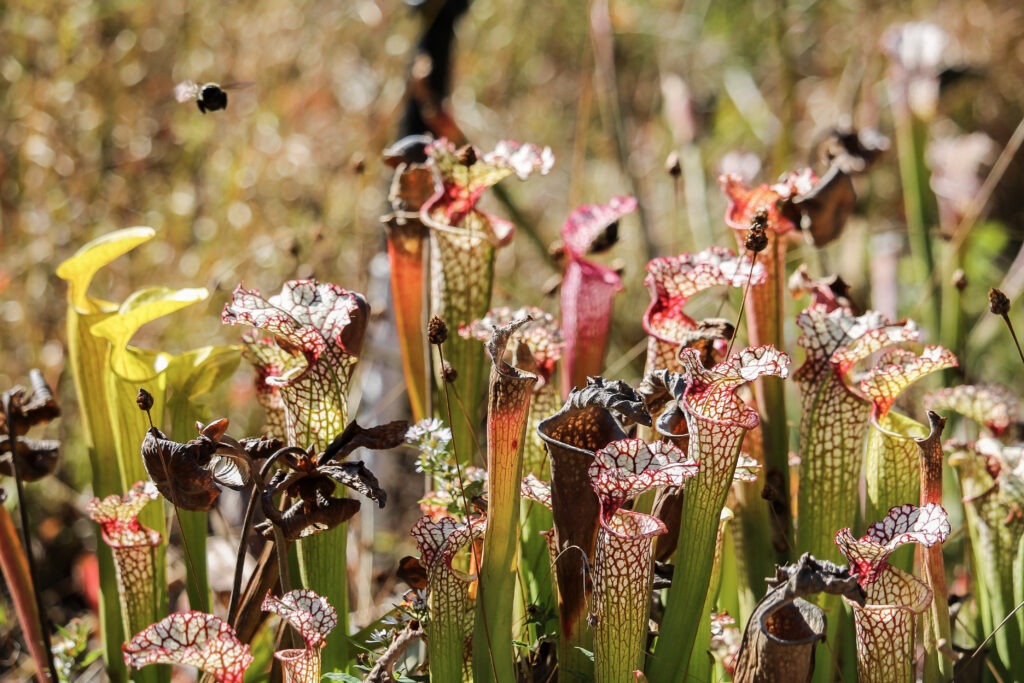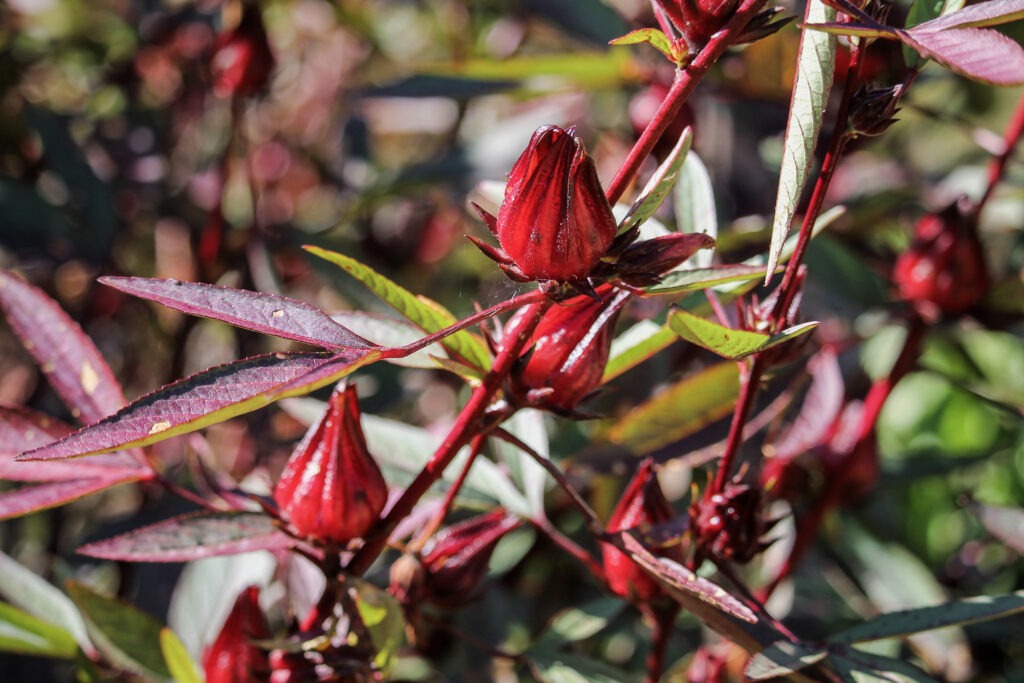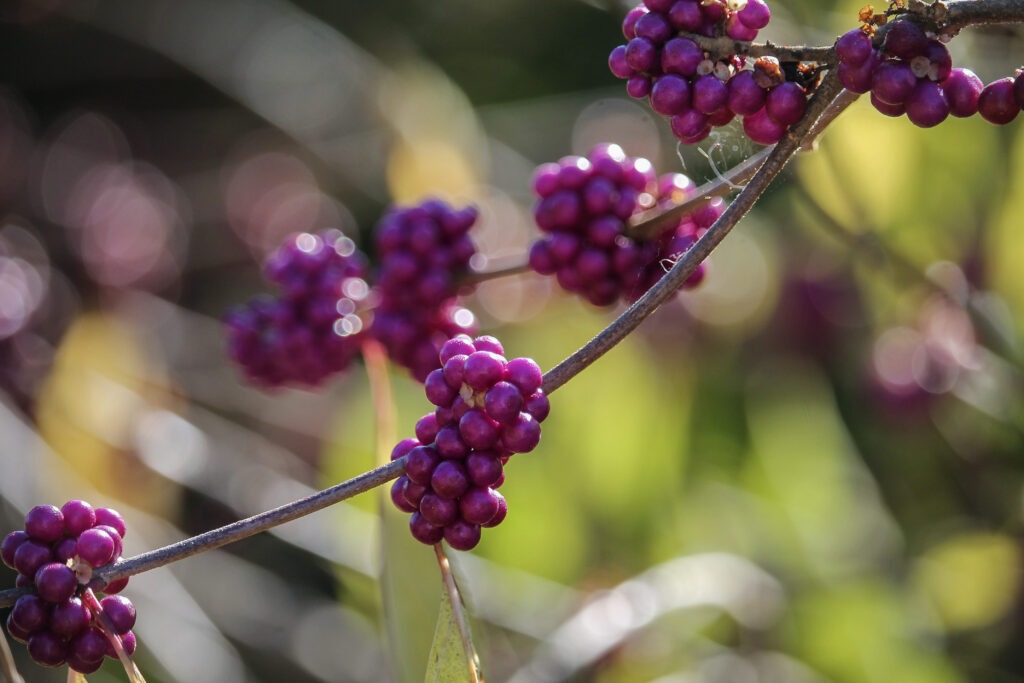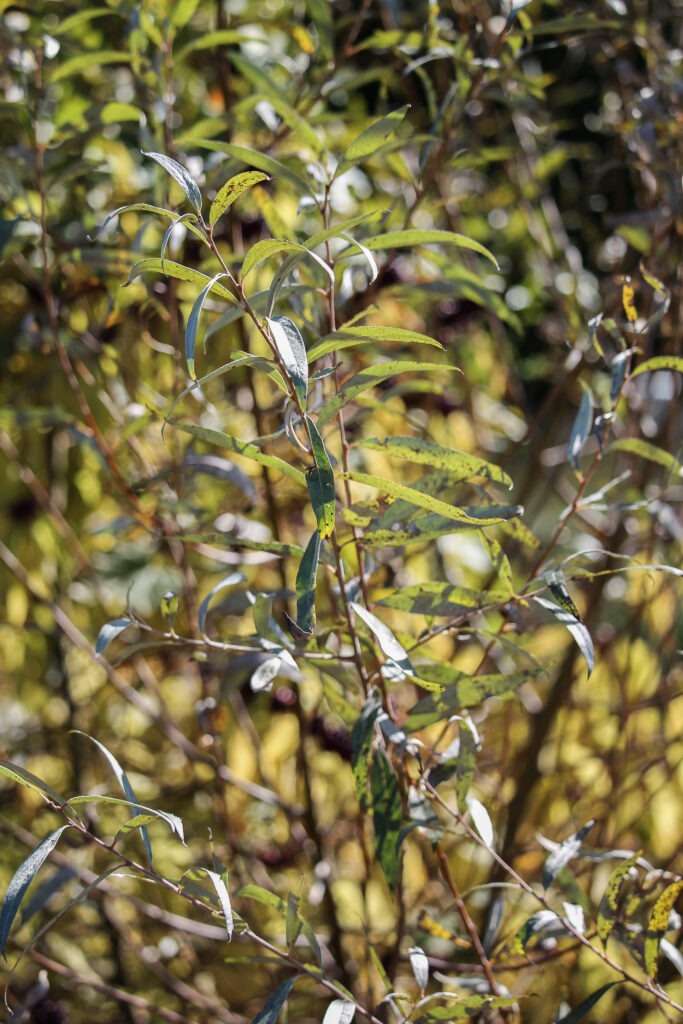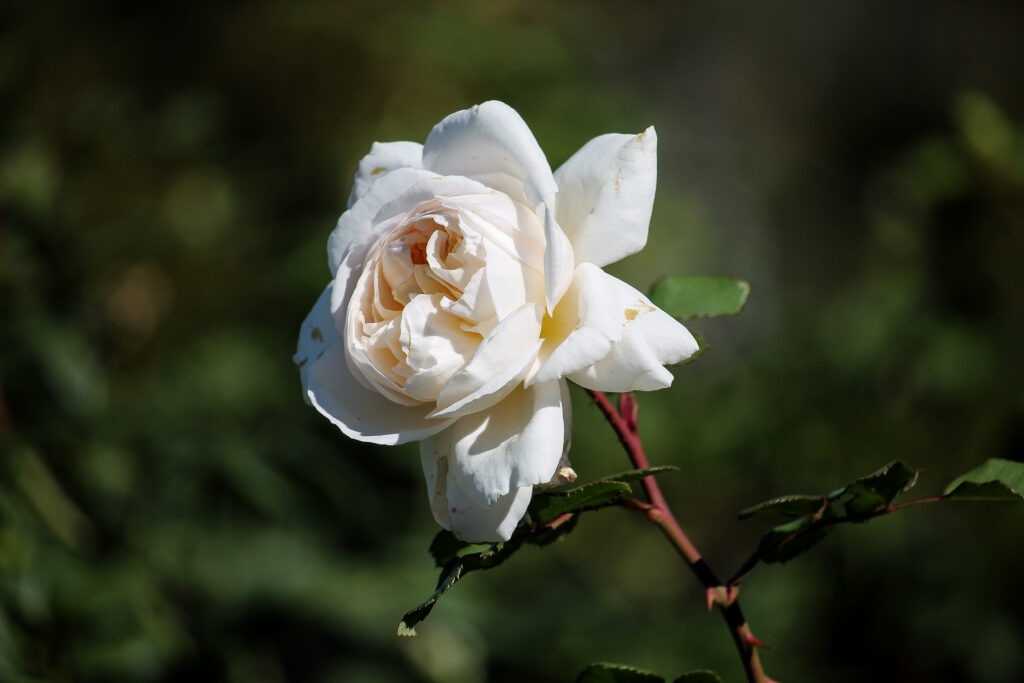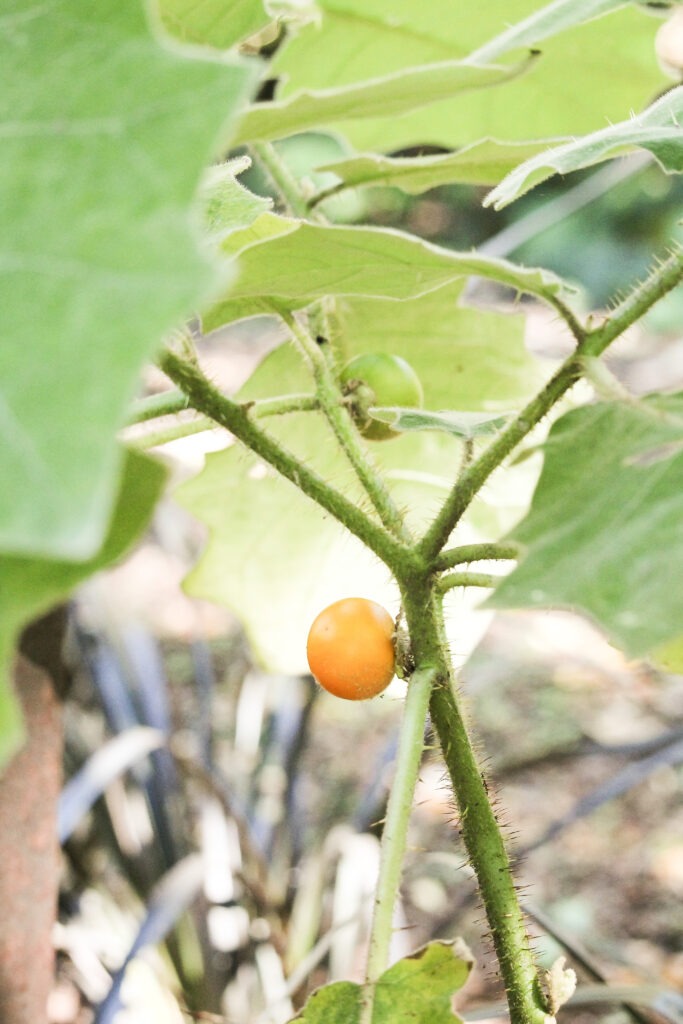10 Spooky Plants to Get in the Halloween Spirit
Halloween is in the air and nature wants in on the fun, too. Here at the Garden, we have unique plants with weird characteristics, eerie habitats, and names that remind us of scary creatures like spiders, snakes, and bats. Others eat bugs and emit unpleasant odors. Some have medicinal properties that make them appropriate for a witch’s brew or maybe a potion to repel evil spirits.
To learn more about these plants’ spooky and redeeming qualities, I joined Garden Guides Julia Cothron and Jeanne Hechler on their Spooky Plants Tour. Here are some of the highlights from their talk:
1. Bat-faced Cuphea (Cuphea Llavea): Once you get close to this Mexican native, you will notice its red flowers contain an adorable bat-like structure in the center. The fangs and ears are unmistakable! (Location: Farm Garden)
2. Toad Lily (Tricyrtis hirta): The flowers and leaves of this plant are spotted like toads and the flowers have warty bumps at the base that are actually nectaries. Toads are often associated with witchcraft as familiars and ingredients in witches’ brews. This pairing most likely stemmed from the belief that toads are toxic and could be used to make heinous poisons. (Location: Asian Valley)
3. Native Pitcher Plant (Sarracenia flava x alata): This carnivorous wetland plant resembles an upside-down umbrella with a top formed by its leaf. It also has a spooky habit. This insectivorous plant lures bees using the attractive leaf color. The bees that land on the lids then become paralyzed by the nectar and fall down into the digestive fluid located at the bottom of the pitcher, where they will decompose, and their nutrients will get absorbed. (Location: West Island Garden)
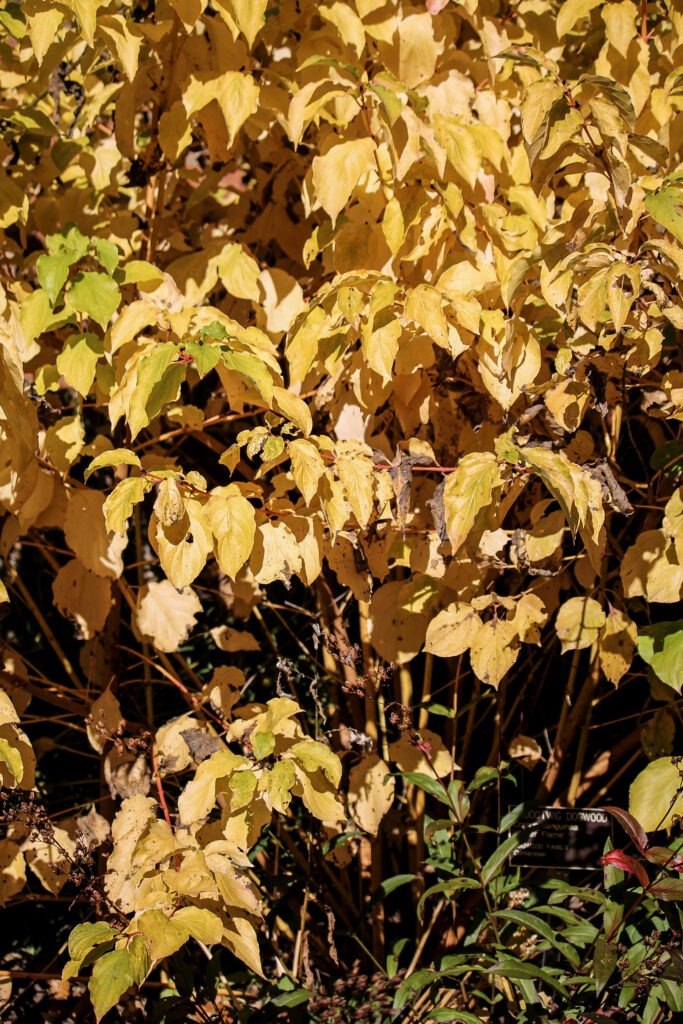
Bloodtwig Dogwood may have an ominous name but it’s actually incredibly useful. Photo by Meredith Orne
4. Blood Twig Dogwood (Cornus sanguinea): The tree barks of the Cornus species have an abundance of tannins and have been used as a substitute for quinine (a drug that’s used to treat malaria and babesiosis) in traditional medicine. In addition, a tea-like drink can be made from the bark to treat fever and pain and the leaves can be transformed into a poultice to cover wounds. (Location: Four Seasons Garden)
5. Roselle (Hibiscus sabdariffa): Also called Jamaica sorrel, this blood-red hibiscus relative has seeds, leaves, fruits, and roots, that are often used medicinally. It can be used to make hibiscus tea, which is rich in ascorbic acid (Vitamin C). Vitamin C helps boost our immune systems to prevent cold and flu, aids in treating discomfort caused by fever with its cooling effect and has anti-inflammatory and antibacterial properties. (Location: Farm Garden)
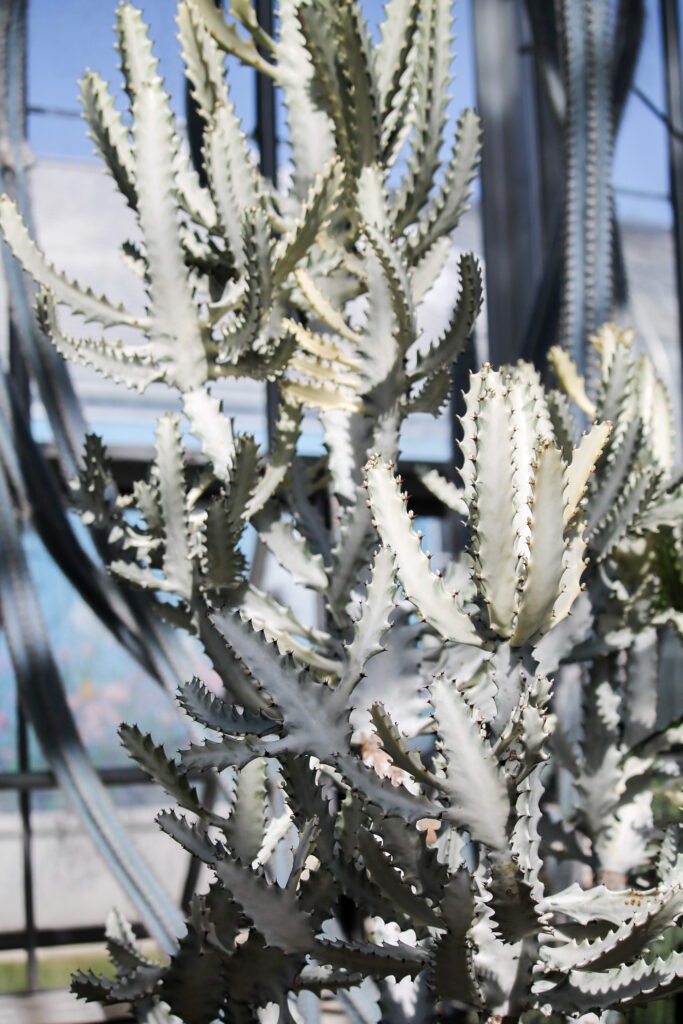
The White Ghost Cactus lacks the chlorophyll-bearing tissues necessary to produce green stems. Photo by Meredith Orne
6. White Ghost Cactus (Euphorbia lactea): This aptly named, spiny-stemmed shrub with mottled branches is a Halloween favorite and can grow up to 15 feet tall. It lacks the chlorophyll-bearing tissues necessary to produce green stems, giving Caper the Ghost a run for his money. (Location: West Wing of the Conservatory)
7. American Beautyberry (Callicarpa americana): Farmers once took the leaves of this plant to put on themselves and under animal harnesses to keep mosquitoes away. Fire ants, ticks, deer flies and mosquitoes are repelled by two compounds in it: callicarpenal and intermedeol. (Location: Healing Garden)
8. White Willow (Salix alba var. sericea): The bark of this ghostly-white tree is also known as “Nature’s Aspirin.” This is because the salicin in willow bark converts to salicylic acid. Some believe it is gentler on your stomach than lab-created aspirin. However, be cautious, because too much willow bark can cause stomach cramping and bleeding. (Location: Healing Garden)
9. Rose (Rosa): Roses often grow in spooky environments like cemeteries. Each color has its own symbolic meaning as well. Black roses can symbolize death and despair, while white roses represent remembrance, reverence, and purity. (Location: Louise Cochrane Rose Garden)
10. Naranjilla (Solanum quitoense): Also called: “little orange” in Ecuador, Costa Rica, and Panama; “Lulo” in Colombia. This spiky plant may look poisonous due to the thorns on every part of it. However, the lulo fruit it creates are used to make the traditional Colombian beverage Lulada. (Location: Flagler Garden)

